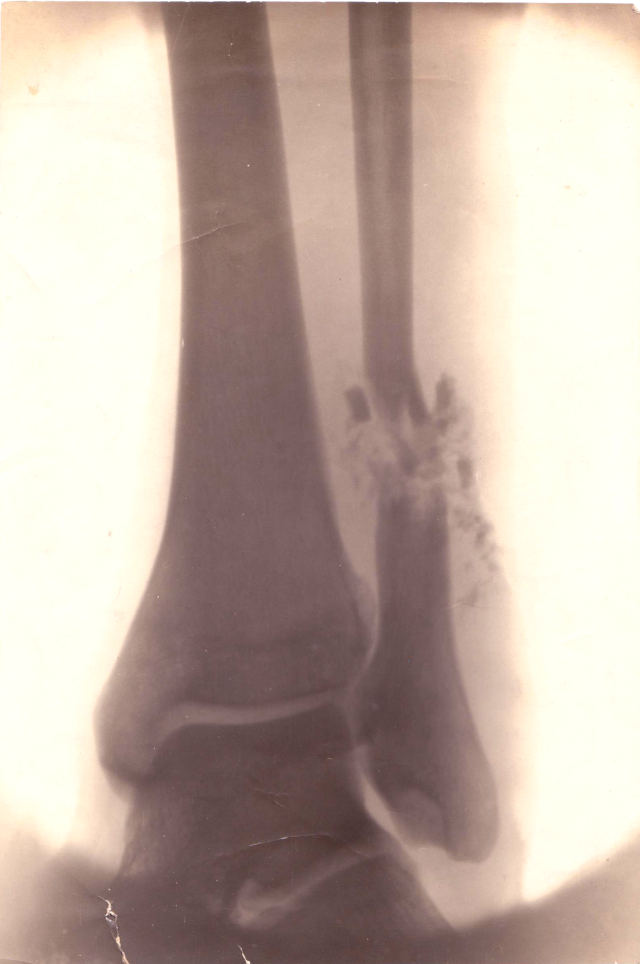Percy Lubbock says that Calderon was writing today from ‘a casualty clearing station’, but George himself calls it ‘the hospital’. Whichever it was, it presumably had X-ray facilities, because in the X-ray below the damage looks sufficiently fresh for the image to have been made today, possibly in the very early hours of the morning (George arrived at the hospital at midnight, 29 October). I shall ask my medical consultant how he interprets this image. Kittie inscribed it on the back as made ‘in Flanders’. To me it looks as though the bullet has been extracted and had entered from back left, but it’s just as likely it passed out of the other side. We don’t know, of course, how far, on his return sprint to his company, George was from the wood where the Germans had been earlier. (Bulgar Woods, Klein Zillebeke?)
The fibula is not weight-bearing, but George would not have been able to walk unaided yesterday because of the pain of the wound (greater than he made out to Kittie) and loss of stability. There would have been blood loss, and muscle tissue would have been injured. The immediate danger, however, was of infection. He may have been given morphine last night, the bullet may have been extracted if it was still there, the wound cleaned, and sterile dressings promptly applied.
This morning he was being very well cared for:
I’m sitting up on the floor in my muddy uniform, which has got dry in the night, unshaven, but washed where it shows, by an orderly — after tea (about a quart), fried bacon, peppermints and cigarettes, for which […] be blessed the kind donors who send them across as gifts.
He was in the middle of a letter to Kittie at least 1700 words long. The general impression it gives is of someone on a high. ‘I really haven’t had a moment’s depression’, he writes, ‘since I joined the regiment [24 hours ago], though I was pretty low-spirited before, with nothing to do.’ This seems to say it all.
Today was the day that the massive Army Group Fabeck went into action.
At 6.45 a.m. it began its bombardment, concentrating particularly around Zandvoorde. Although the German troops thought the bombardment was inadequate, they succeeded in occupying the village three hours later. The Brigadier-General to whom George had reported yesterday, S.T.B. Lawford, sent two of his battalions of Royal Warwickshires up to retake it. George’s battalion, the 2nd, was presumably one of them. They were driven back by heavy machine-gun fire and forced to entrench 1200 yards behind Zandvoorde. The German bombardment resumed.
According to the Royal Warwickshires’ regimental history, by the morning of 31 October many of their trenches had been completely destroyed, with the occupants buried in them.
Next entry: Complex, yes























